Make a fluffy, tender, slightly chewy, and very flavorful pizza crust with this 3-ingredient Neapolitan Pizza Dough recipe! An overnight rise gives this simple yeasted dough an incredible depth of flavor, with just 10 minutes or so of hands-on time and no kneading involved!
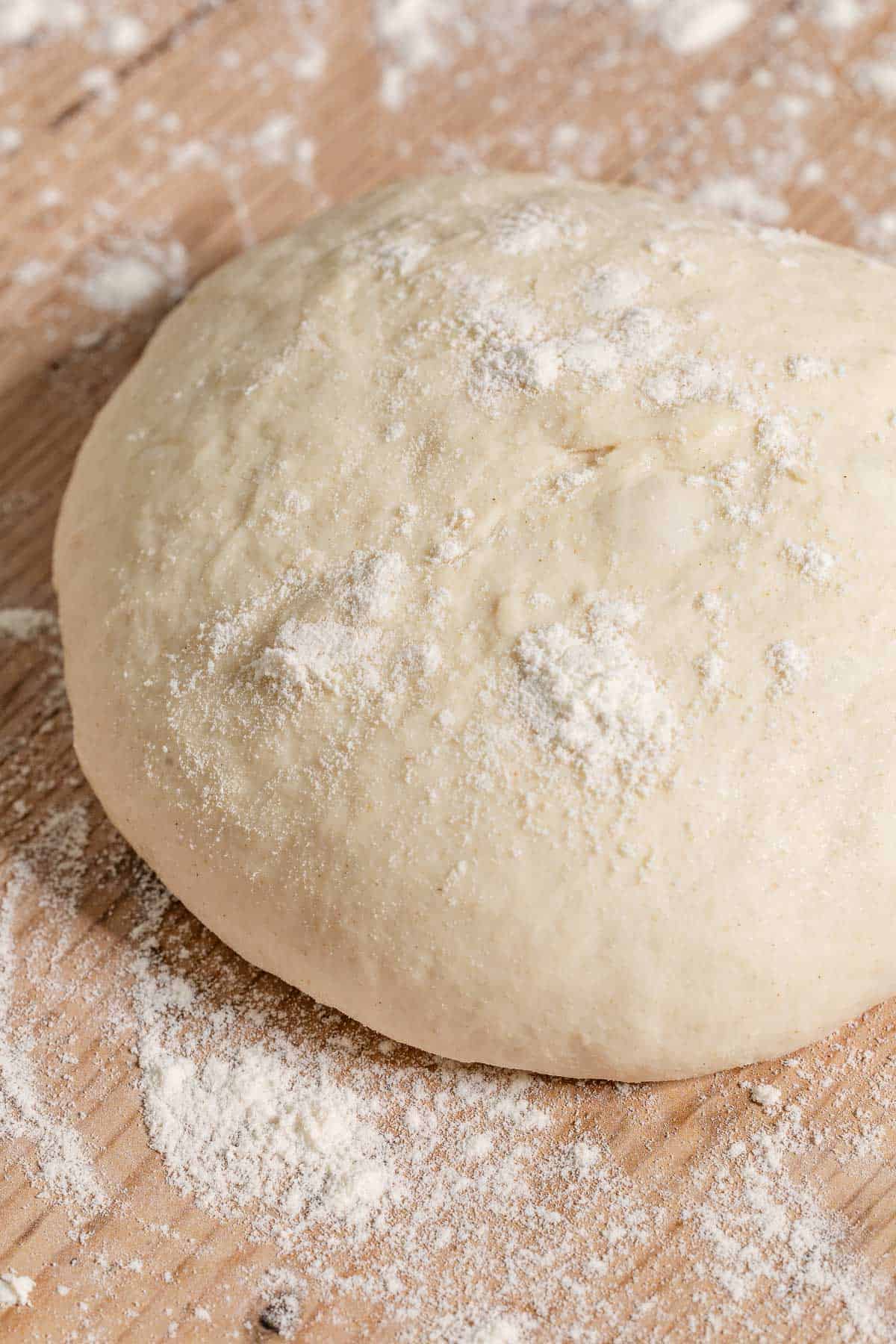
I often make a last minute Veggie Pizza with a quick-rising Whole Wheat Dough. But when I want a dough that’s extra fluffy and tender–and have the forethought to plan the night before–I absolutely love this Neapolitan Pizza Dough recipe.
Living in a city, I don’t have an outdoor kitchen with a brick wood fire pizza oven, or even any outdoor space for a portable version. But even so, baking this dough on a pizza stone is the closest approximation to my favorite pizzerias.
It’s beautifully simple, made with just flour, yeast, salt, and water. It doesn’t require a stand mixer or hand kneading. Just mix until all the flour is moistened, cover, and leave it overnight.
The long, slow fermentation time gives the crust a tantalizing flavor as the yeast has time to develop a buttery, earthy depth. Double zero (00) pizza flour produces a soft, fluffy texture with a light chew. Combined with the slow fermentation, it makes a crust with a crisp outer shell that shatters into the soft, airy interior, all while having enough strength to shoulder the toppings of your choice.
Table of Contents
- What is Neapolitan Pizza Dough?
- Ingredients for Neapolitan Pizza Dough
- Ingredient Spotlight
- How to Make Neapolitan Pizza Dough
- How to Make This Neapolitan Pizza Dough Recipe Without a Pizza Stone
- Is There a Faster Way to Make Neapolitan Pizza Dough?
- What to Serve with Neapolitan Pizza Dough
- More Pizza Recipes
- Neapolitan Pizza Dough Recipe
- Mediterranean Diet Starter Kit
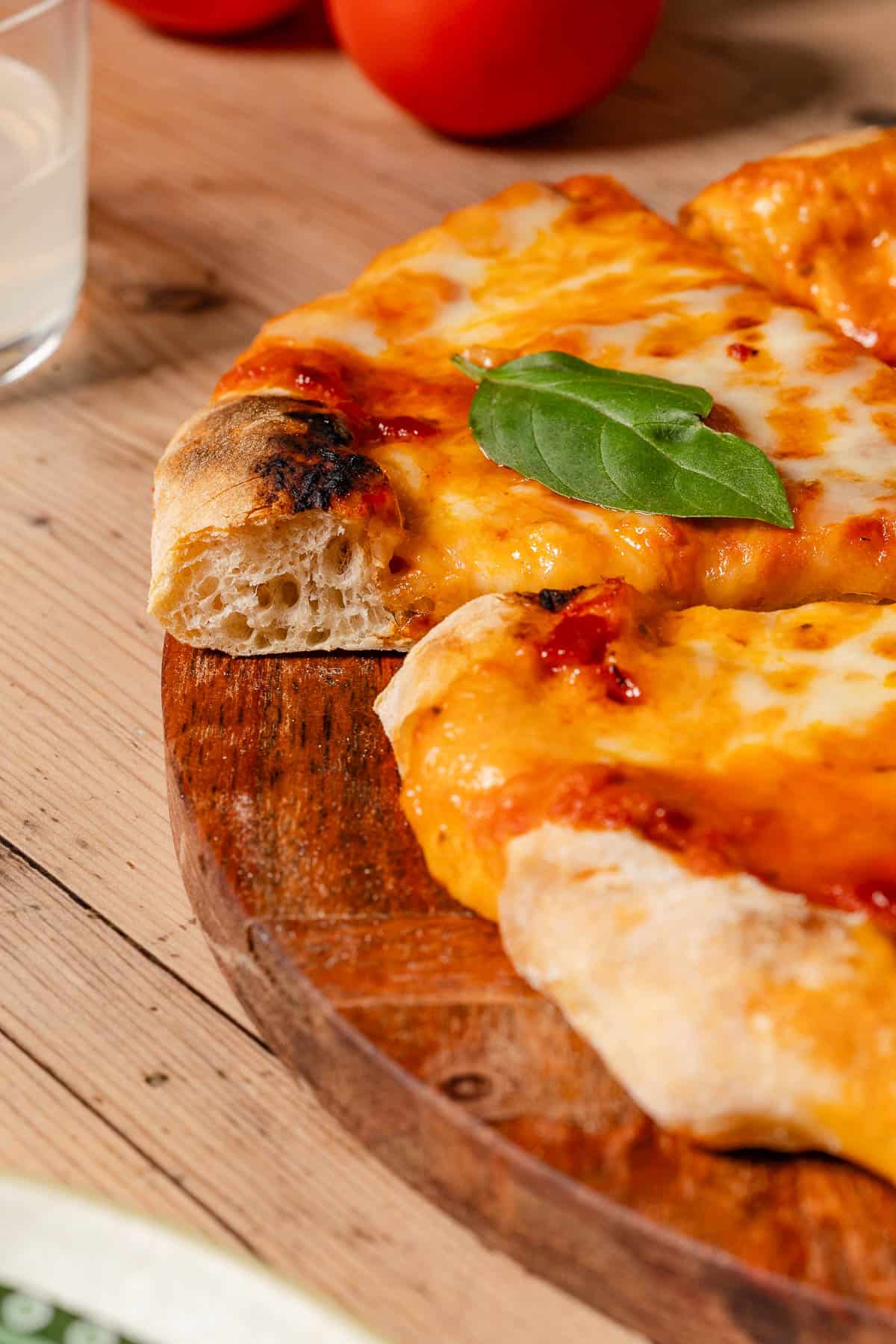
What is Neapolitan Pizza Dough?
Neapolitan pizza is known for its flavorful crust that is fluffy, tender, and slightly chewy. It uses white 00 pizza flour and doesn’t rely on any oil or sugar.
Believe it or not, Neapolitan pizza is a protected product in the European Union and considered a UNESCO cultural heritage. To ensure quality and authenticity, the Associazione Verace Pizza Napoletana (the True Neapolitan Pizza Association) has strict requirements for what qualifies as Neapolitan pizza, including the type of flour you can use, how thick the dough can be, and what you can top it with.
While this Neapolitan pizza dough recipe might not comply with their strict definition, it is based on that famous style of dough. So while I won’t be getting out my measuring tape to make sure it’s less than 11.8 inches wide and 0.1-0.12 inches thick, I believe this home-style version embraces the same flavor profile and spirit of the original. That’s Neapolitan enough for me!
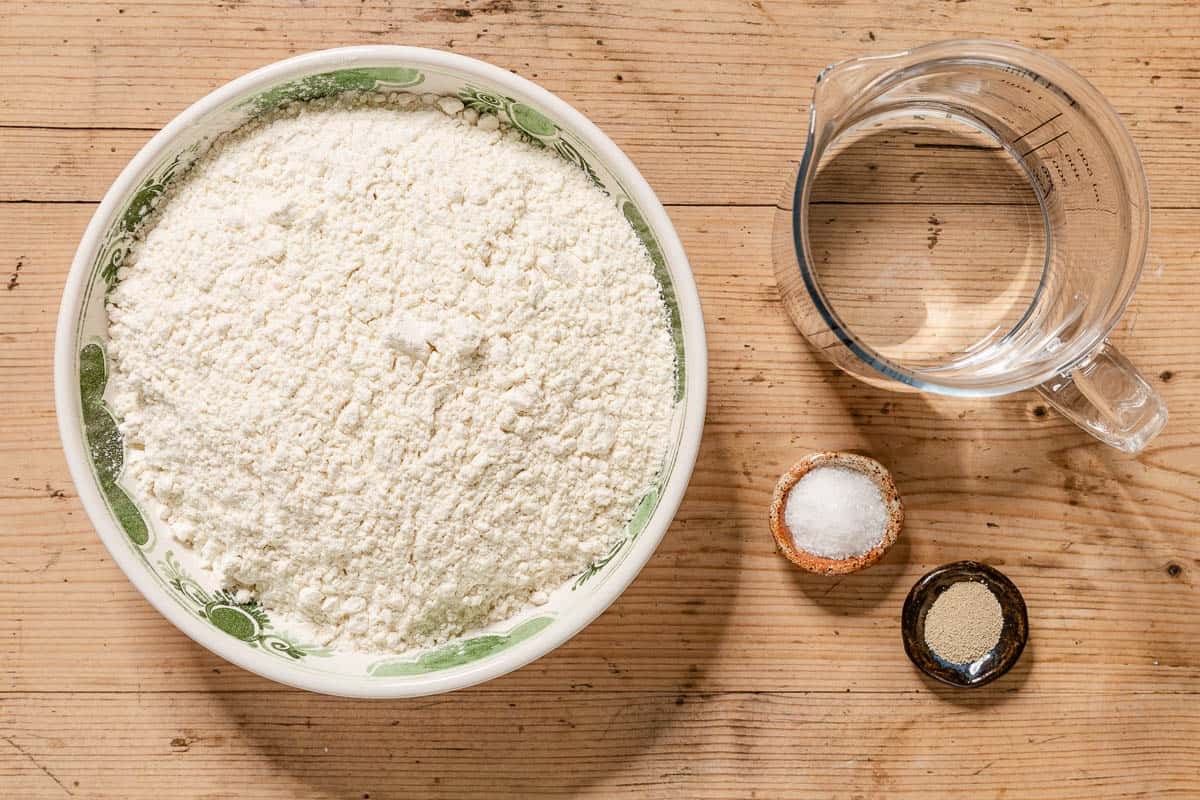
Ingredients for Neapolitan Pizza Dough
Traditional Neapolitan pizza dough has just 4 ingredients: flour, yeast, salt, and water. Classically, 00 pizza flour gives the best texture, but you can use bread flour in a pinch. Here’s what you’ll need:
- 00 flour: Double zero pizza flour is ground powder-fine for a pizza crust that is smooth with a soft chew (more info in “Ingredient Spotlight” below). You may substitute it with an equal amount of bread flour or all-purpose flour, though the texture will be affected.
- Instant yeast: Instant yeast is my favorite because I can skip the extra step of activating the yeast. You can substitute with an equal amount of active dry yeast, but activate it by dissolving it in a few tablespoons of room temperature water before mixing.
- Kosher salt: salt enhances the flavor of the crust.
- Extra virgin olive oil (optional): Brushing a small amount of oil, like our Italian Nocellara, gives the crust a golden finish.
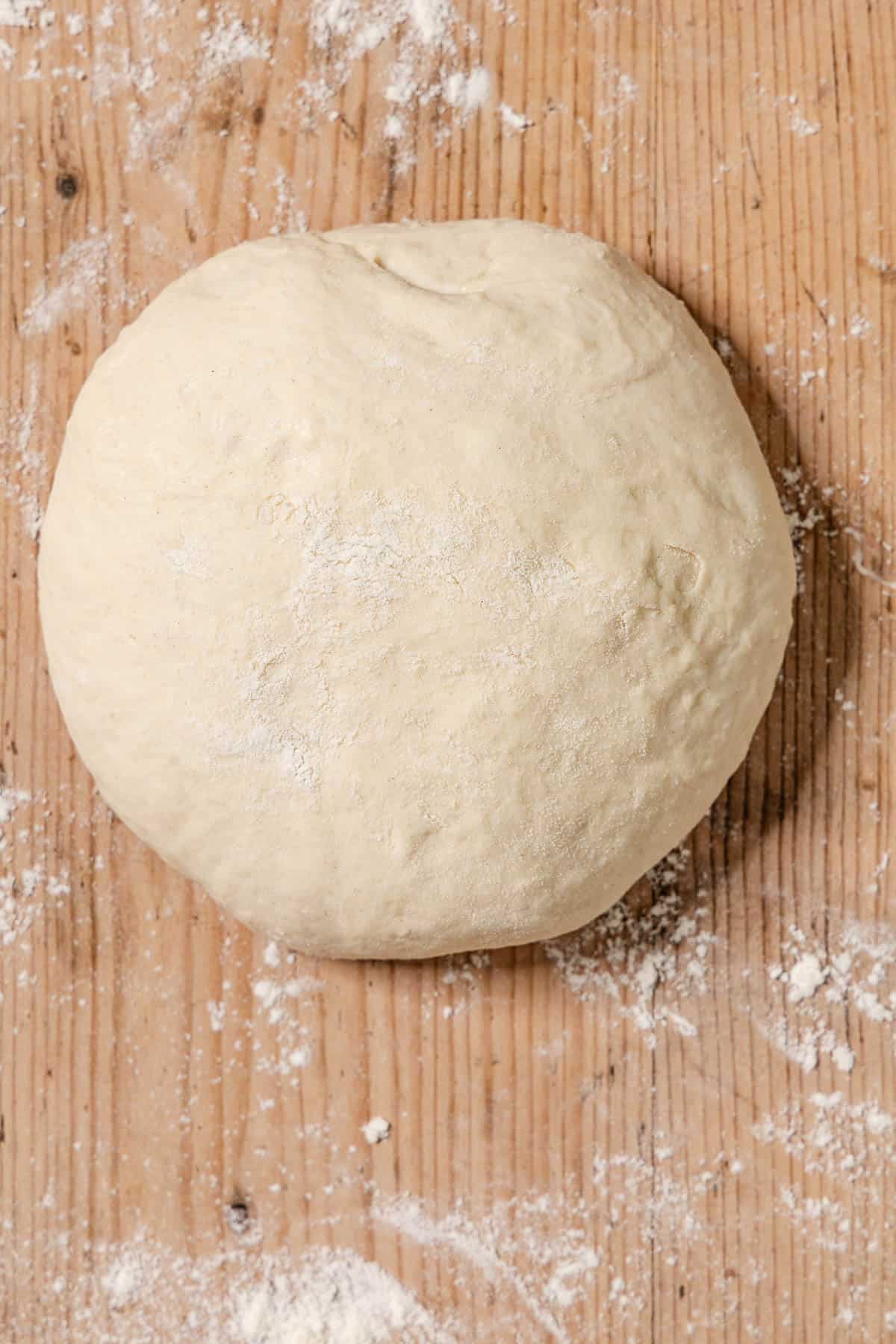
Ingredient Spotlight
Doppio zero flour, also known as 00 flour, double zero flour, or “double O” flour, is a finely ground Italian flour most commonly used for pasta and pizza. In Italy, you choose flour not only based on the composition and protein content but also on the grind size. The grind size ranges from 00 to 2, with 2 being the coarsest and 00 the finest.
This means you can find different types of 00 flour, like pastry flour or semolina flour. The fine texture of the classic 00 flour, or the kind used for this recipe, creates a dough that is soft, tender, toothsome, and has just the right amount of chew.

How to Make Neapolitan Pizza Dough
With such a short and simple ingredient list, Neapolitan pizza dough relies on overnight fermentation to develop its characteristically flavorful, soft, and chewy crust. Plan on starting the dough the night before you intend to bake the pizzas, or first thing in the morning at the latest. Here’s how to make the dough:
The Night Before: Let the Dough Rise
- Mix the dough: In a large mixing bowl, whisk together 3 cups 00 flour, 1/4 teaspoon instant yeast, and 1 1/4 teaspoon kosher salt. Pour in 1 cup tepid water and stir with a wooden spoon until a shaggy dough comes together and no bits of dry flour remain.
- Let the dough rise: Cover the bowl and leave it to rise at room temperature for 12 to 18 hours (I usually do this overnight).
Shape, Top, and Bake the Dough
- Shape the dough: Dust your hands and a work surface with flour. Scrape the dough out of the bowl and onto the floured surface. Use a bench scraper or a sharp knife to divide the dough in half for larger or thick-crust pizzas, or in 3 pieces for smaller or thin-crust pizzas. Shape each piece of dough into balls. Let them rest with the seam-side down for at least 30 minutes, uncovered on the counter. Or cover them with a damp tea towel and let them rest for up to 2 hours.
- Get ready to bake: While the dough rests, place a pizza stone in the oven and preheat to 500°F.
- Stretch the dough: Working one ball of dough at a time, stretch the dough on a lightly floured work surface into a circle about 12 to 14 inches in diameter. With the palms of your hands, press the dough outward from the center into a rough circle. You can pull and stretch the dough from the edges to spread the dough further. If the dough sticks to the counter, dust it with more flour. To form the crust, leave the edges of the dough slightly thicker than the middle.
- Transfer to parchment paper to prevent sticking. Cut a piece of parchment paper into a round about the same size as the pizza. Place the parchment on a pizza peel, cutting board, or the back of a sheet pan. Carefully transfer the dough onto the parchment.
- Add the toppings: Brush the top of the dough lightly with extra virgin olive oil. Add your favorite sauce and toppings–I especially love this dough with Pizza Tonno e Cipolla (Tuna Pizza).
- Bake the pizza: Reduce the oven temperature to 450°F. Carefully slide the pizza along with the parchment paper onto the baking stone. Bake for 9 to 12 minutes, or until the crust is golden brown and the cheese begins to bubble.
How to Make This Neapolitan Pizza Dough Recipe Without a Pizza Stone
Pizza stones are excellent at retaining heat, and the direct heat from the hot stone cooks the crust evenly creating a crisp bottom. If you don’t have a pizza stone, you can still use this Neapolitan pizza dough to make delicious home-baked pizzas on a baking sheet or in a cast-iron skillet. Things to keep in mind If you use a baking sheet or a cast-iron skillet:
- They don’t need to preheat in the oven like a pizza stone does.
- Prevent sticking. Line the baking sheet with parchment paper or to grease the cast-iron skillet generously with olive oil.
- Begin checking after 12 minutes. It may take longer for the pizza to bake on a baking sheet or in a cast-iron skillet. Carefully lift the crust with a spatula to check underneath for doneness. The crust should be golden brown and the underside should no longer look or feel doughy.
Is There a Faster Way to Make Neapolitan Pizza Dough?
To make a quicker version of this Neapolitan pizza dough recipe, you can double the yeast and mix the dough in the morning on the same day you plan to bake the pizzas. Let the dough rise at room temperature for about 8 hours.
The flavor and texture of the dough is best with a long, slow fermentation. If you’re looking for another easy pizza dough that is ready to bake in about an hour, try this easy whole wheat pizza dough recipe.
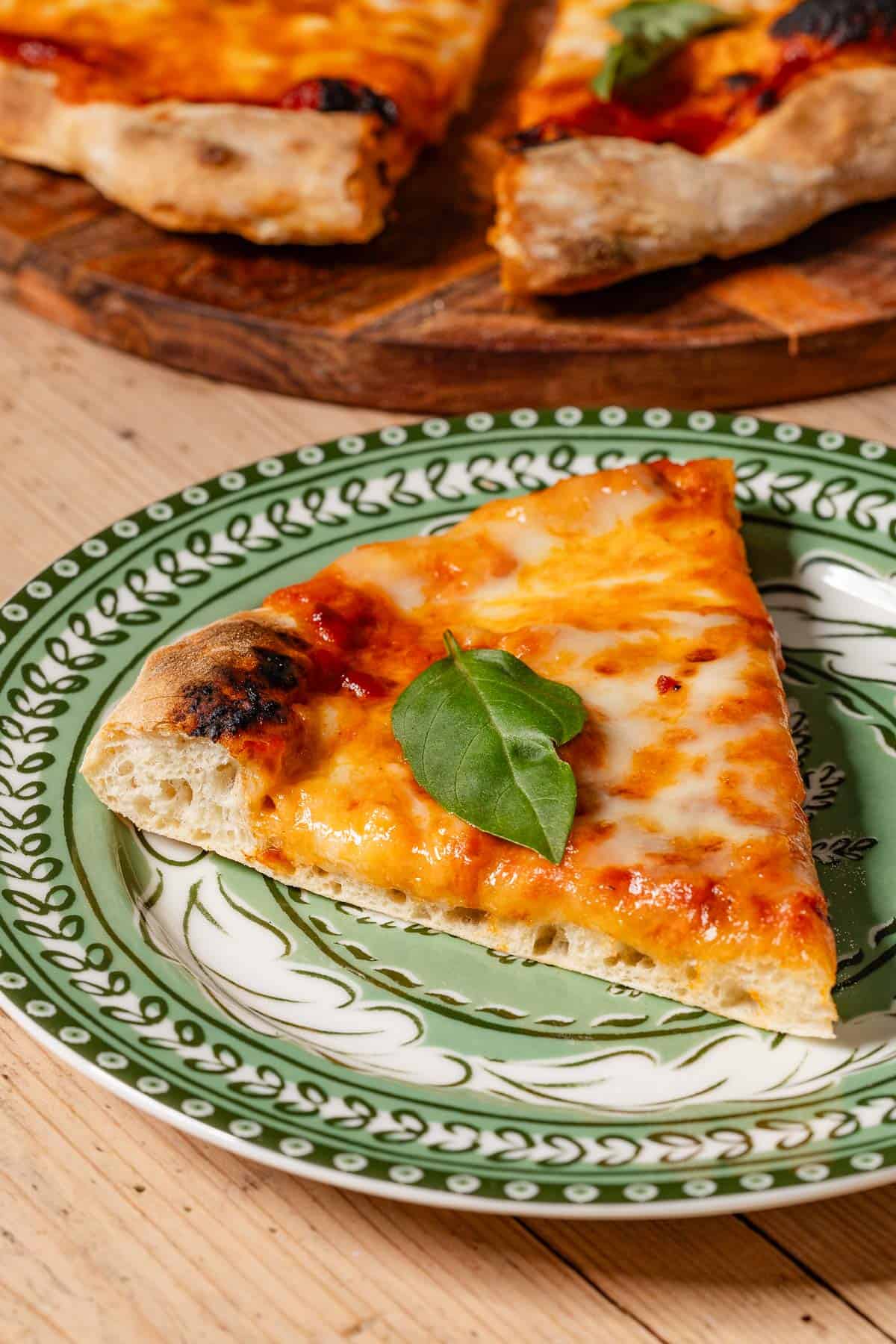
What to Serve with Neapolitan Pizza Dough
Pizza is a full meal in and of itself, but you can serve some light sides like salad or veggies to round things out. There’s no denying that Caprese Salad is a classic, or for a crowd you could make a big bowl of Italian Salad.
Serve veggies on the side, like Sautéed Asparagus, along with Strawberry Bellinis to sip on while the pizzas bake. End your Italian evening with a scoop of sweet and tangy Lemon Sorbet.
More Pizza Recipes
Browse all Mediterranean recipes.
Visit Our Shop.
Neapolitan Pizza Dough
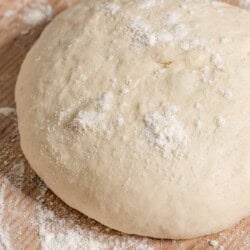
Equipment
- Pizza Stone (see note)
Ingredients
- 3 cups (360g) 00 flour or bread flour, plus more for dusting
- 1/4 teaspoon instant yeast
- 1 1/4 teaspoons kosher salt
- 1 cup 240ml tepid water
- Extra virgin olive oil (optional), for brushing
- Your favorite sauce and toppings
Instructions
- Mix the dough: In a large mixing bowl, whisk together the flour, yeast, and salt. Pour in the water and stir with a wooden spoon until a shaggy dough comes together and no bits of dry flour remain.
- Let the dough rise: Cover the bowl and leave it to rise at room temperature for 12 to 18 hours (I usually do overnight).
- Shape the dough: Dust your hands and a work surface with flour. Scrape the dough out of the bowl and onto the floured surface. Use a bench scraper or a sharp knife to divide the dough in half for larger or thick-crust pizzas, or in 3 pieces for smaller or thin-crust pizzas. Shape each piece of dough into balls. Let them rest with the seam-side down for at least 30 minutes, uncovered on the counter. Or cover them with a damp tea towel and let rest for up to 2 hours.
- Get ready to bake: While the dough rests, place a pizza stone in the oven and preheat to 500°F.
- Stretch the dough: Working one ball of dough at a time, stretch the dough on a lightly floured work surface into a circle about 12 to 14 inches in diameter. With the palms of your hands, press the dough outward from the center into a rough circle. You can pull and stretch the dough from the edges to spread the dough further. If the dough sticks to the counter, dust it with more flour. To form the crust, leave the edges of the dough slightly thicker than the middle.
- Transfer to parchment paper to prevent sticking. Cut a piece of parchment paper into a round about the same size as the pizza. Place the parchment on a pizza peel, cutting board, or the back of a sheet pan. Carefully transfer the dough onto the parchment.
- Add the toppings: Brush the top of the dough lightly with olive oil. Add your favorite sauce and toppings.
- Bake the pizza: Reduce the oven temperature to 450°F. Carefully slide the pizza along with the parchment paper onto the baking stone. Bake for 9 to 12 minutes, or until the crust is golden brown and the cheese begins to bubble.
Notes
- Shop this recipe: Visit our shop to browse quality Mediterranean ingredients including the olive oil used in this recipe.
- I especially love this dough with Pizza Tonno e Cipolla (Tuna Pizza).
- To make this recipe in a cast iron skillet or baking sheet:
- No need to preheat in the oven like a pizza stone does.
- Prevent sticking. Line the baking sheet with parchment paper or to grease the cast-iron skillet generously with olive oil.
- Begin checking after 12 minutes. It may take longer for the pizza to bake on a baking sheet or in a cast-iron skillet. Carefully lift the crust with a spatula to check underneath for doneness. The crust should be golden brown and the underside should no longer look or feel doughy.
- For additional browning, you can finish the pizza under the broiler for 1 to 2 minutes, if desired, but keep a close watch. Parchment paper is generally rated up to 450°F, and the exposed parchment may scorch.
- Getting ahead: The unbaked balls of dough can be kept in the fridge, in a covered bowl, or wrapped in plastic for up to 3 days. Let the dough come to room temperature for 2 to 3 hours before stretching the dough and assembling the pizzas.
Nutrition
Mediterranean Diet Starter Kit
Stock your pantry with the essentials to eat the Mediterranean way, including Greek olive oil, 7 different spices, and tahini.
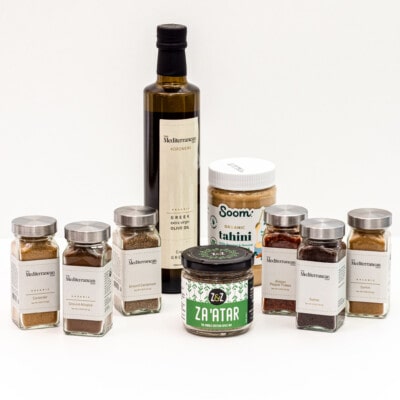



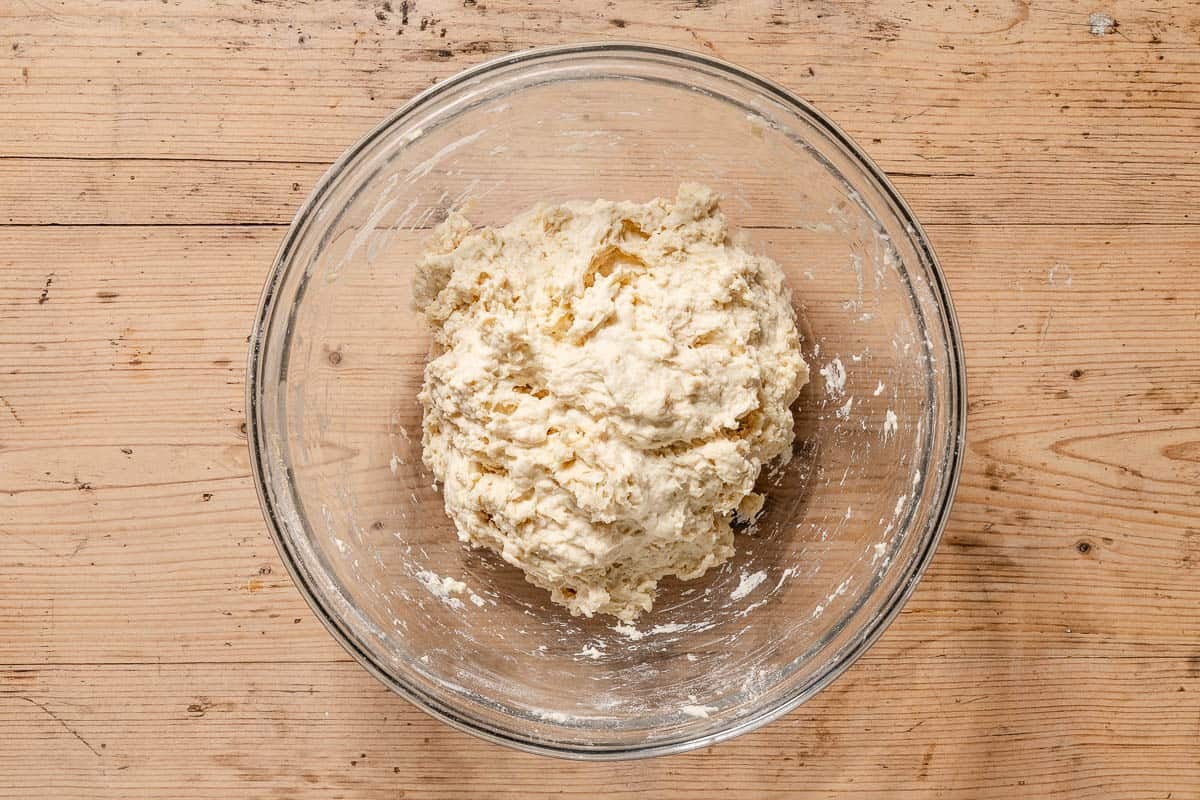
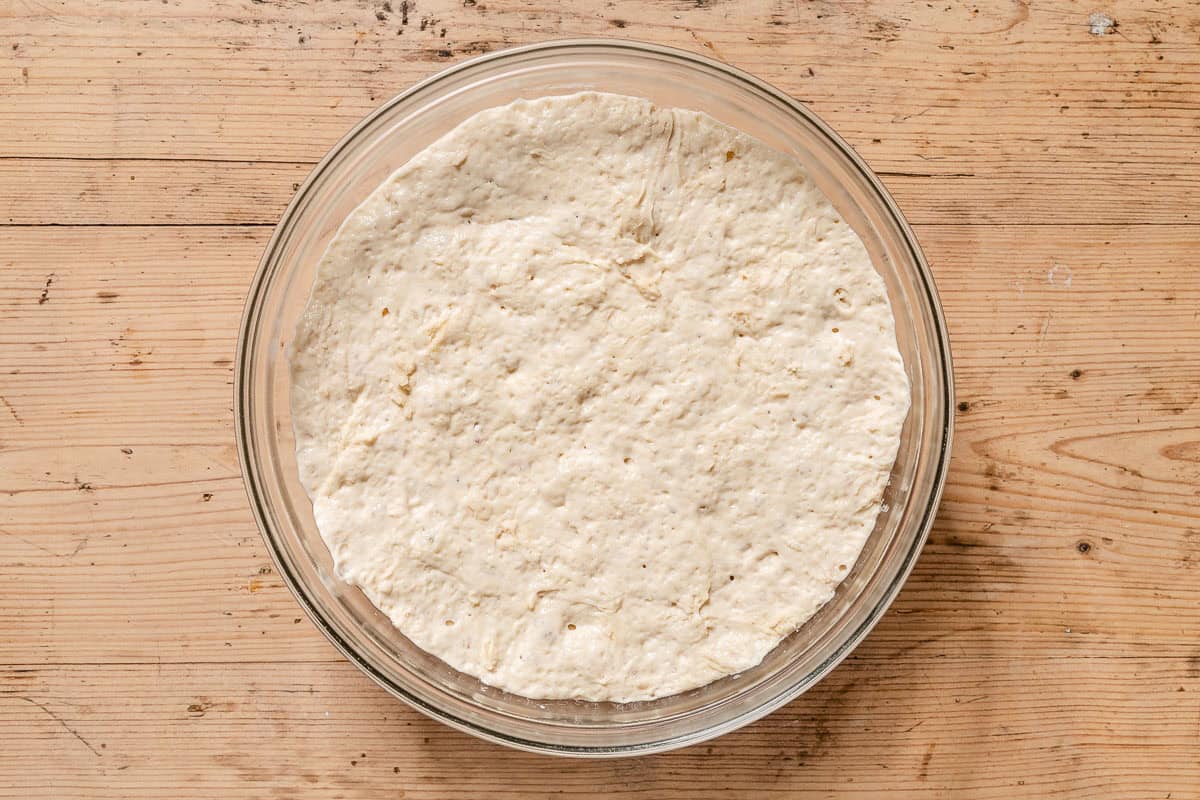
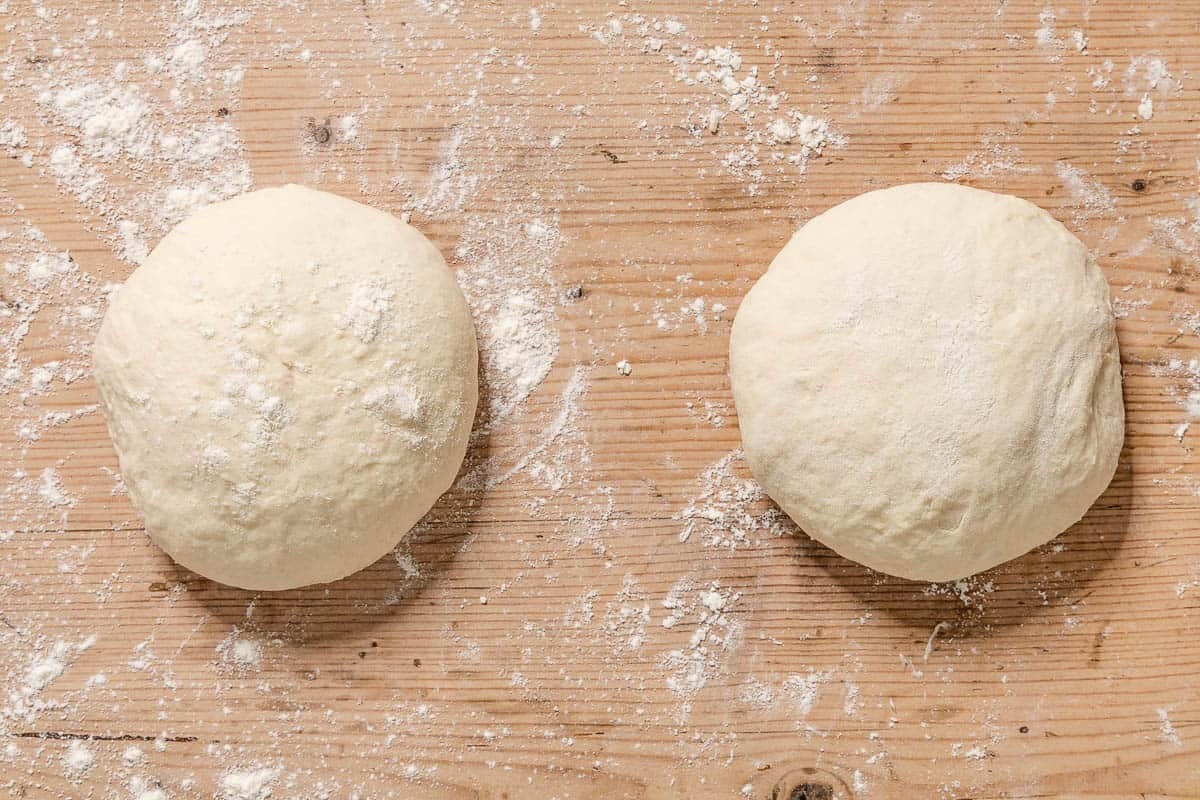
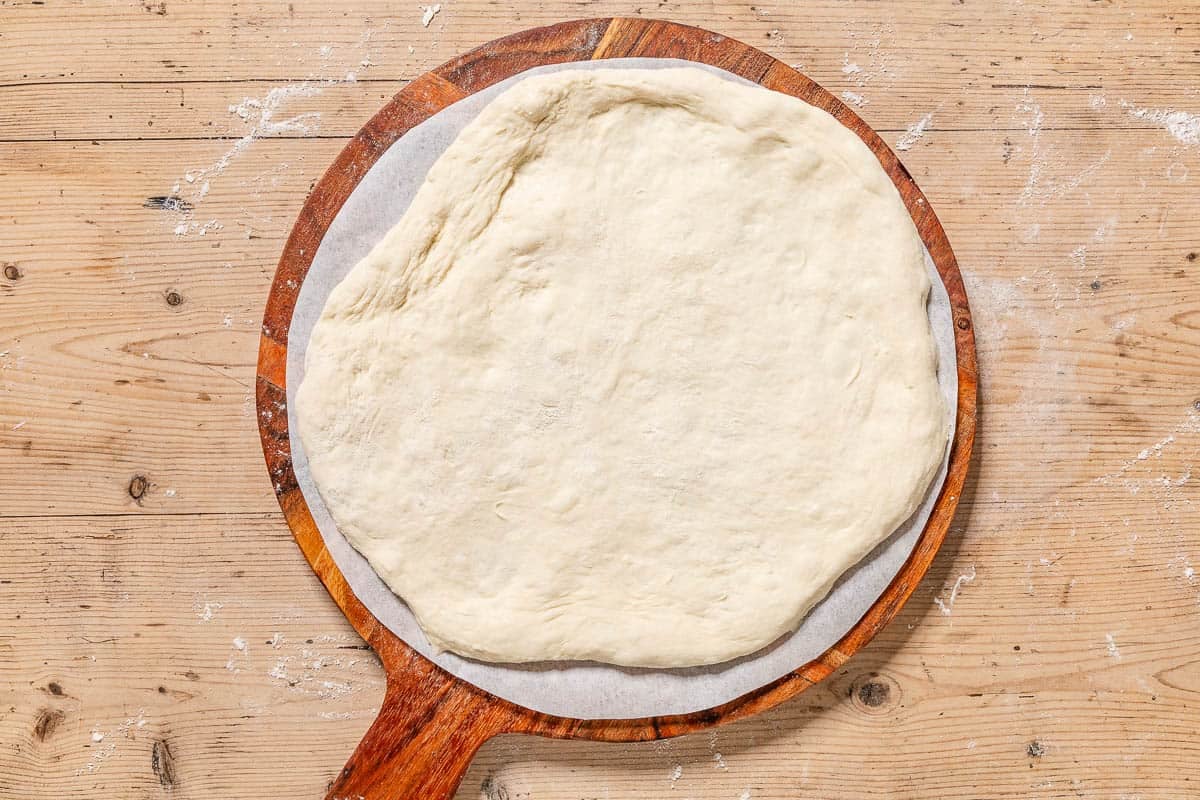
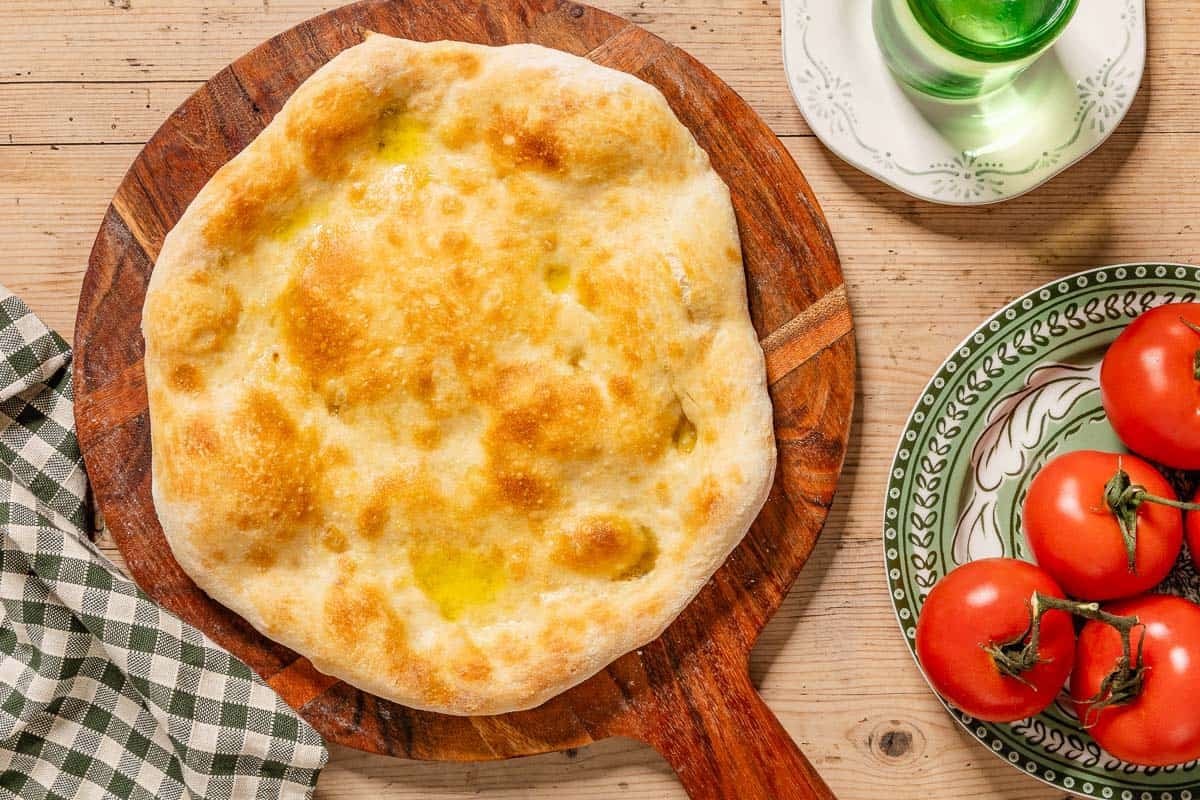


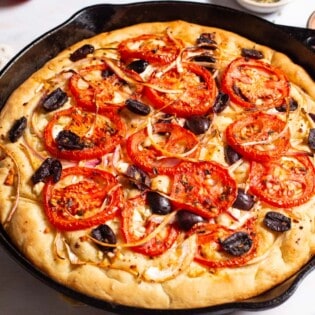

Started the dough last night and trying it this evening with my family. Is the nutrition information for the entire dough or for each of the two 12-14 inch doughs the recipe makes?
Hi, Nick! Our recipes can be divided by the number of servings listed to get the “serving size” that goes with the nutritional facts (for this recipe, there are 6 servings). The nutrition info here is our best effort and we use a program that calculates that for us based on the ingredient list. Unfortunately, the exact serving size measurement (by amount of dough or number of slices, for instance) is another layer that’s harder for us to precisely calculate at the moment. We do hope to improve this in the future, though!
I just made pizzas tonight from this dough. Easiest and tastiest pizza crust! So good with simple sauce and toppings. We also made a dessert pizza with marscapone, Raspberry puree and strawberry slices. Another winner from Suzie!
Yay! So glad you loved it!
I made this last night and it was absolutely delicious! I already used organic Italian 00 flour in my pizza crust but this took it to a whole new level. Honestly I was very wary of the lack of kneading, which I’ve always done for a good 5 minutes in my Kitchenaid mixer, coupled with the small amount of yeast. I doubled the yeast and only sit for 9 hours before following the rest of the recipe. The use of parchment paper on the pizza stone is a great step and is easy to manage. My final pizza had a very crisp crust with a pillowy layer of tender crust that absorbed and lofted the toppings. Yum!!! Excellent recipe!
Could this dough be leftin the fridge for two nights, and then taken out to make the pizza balls?
Hi, Dave. Yes, but I would ball the dough first. The unbaked balls of dough can be kept in the fridge, in a covered bowl, or wrapped in plastic for up to 3 days. Let the dough come to room temperature for 2 to 3 hours before stretching the dough and assembling the pizzas.
Love this recipe and wanted to know do you place the unbaked balls of dough after you first form them or after they have had 2 hours covered at room temperature?
Hi, Ryan! Can you please clarify your question a bit? I’m not sure I understand.
Thank you, thank you, thank you, it is so great to have you back, my pizza dough is made and will be ready to bake tomorrow morning. I just love making home made pizza, the tomatoes always taste so fresh. Many thanks, Diane from Ireland
Hope you loved it, Diane!
My sons and DIL will love this, I think!
I hope you give it a try, Reba!